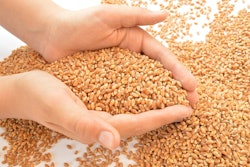
Crop Conditions Mostly Better Than Expected
- Corn conditions are 74% good to excellent, up from 70% last week and 71% expected; plantings were 93% complete and ahead of the 89% average.
- Soybean conditions are 70% good to excellent compared to 68% expected.
- Soybean planting is 75% complete up from 53% last week and 68% average.
- Spring wheat crop conditions are 80% good to excellent compared with 74% at this time last year; planting is nearly complete and in line with last year.
- Winter wheat conditions are 51% good to excellent compared with 54% expected by the trade, 54% last week, and 64% last year.
- Cotton is 66% planted compared with 53% last week, 67% last year, and 66% average.
FBN’s Take On What It Means: Crop ratings are higher than expected with better ratings in the western Corn Belt and lower ratings in parts of the eastern Corn Belt due to excess rainfall. The somewhat drier bias in the WCB bears watching, but is not yet a concern. Although the forecast for the week ahead calls for above normal temps and slightly below normal precipitation across the Midwest, adequate soil moisture and scattered showers should keep conditions mostly steady.
China Buys US Soybeans After Reported Stoppage
- Early Monday, news wires reported China had told state-owned firms to halt purchase of US soybeans, pork, corn and cotton.
- State-owned Chinese firms were then reported buying at least three cargoes of US soybeans later on Monday.
- The purchases, totaling at least 180,000 tonnes, were for shipment in October or November which is the peak of the US soy export season.
- The sales were relatively small compared with recent purchases by state-owned firms totaling a million tonnes or more at a time.
- Chinese importers canceled 10,000 to 20,000 tonnes of pork shipments from the US that were previously purchased.
FBN’s Take On What It Means: Heightened tensions regarding the coronavirus and Hong Kong have led to increased uncertainty about the US/China trade deal. It is not clear why buying continued after the Chinese government message to their state-owned firms. It may be that China intends to slow down trade rather than come to a full stop. What is clear is that China will need to import US soybeans at some point this fall as supplies from South America become unavailable.
The risk of trading futures, hedging, and speculating can be substantial. FBN BR LLC (NFA ID: 0508695)










